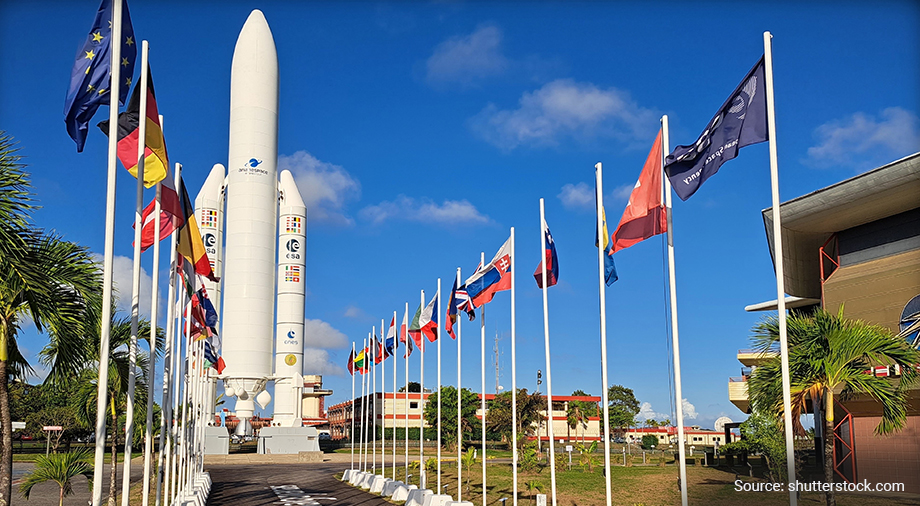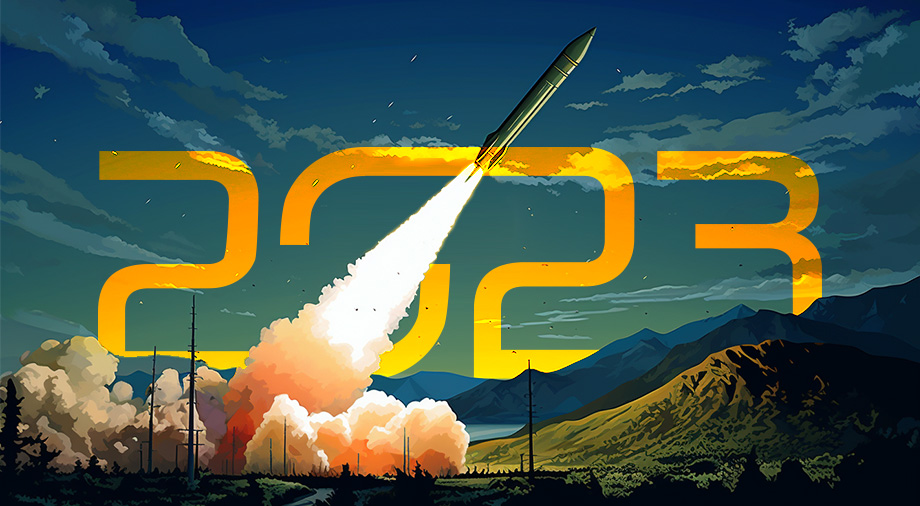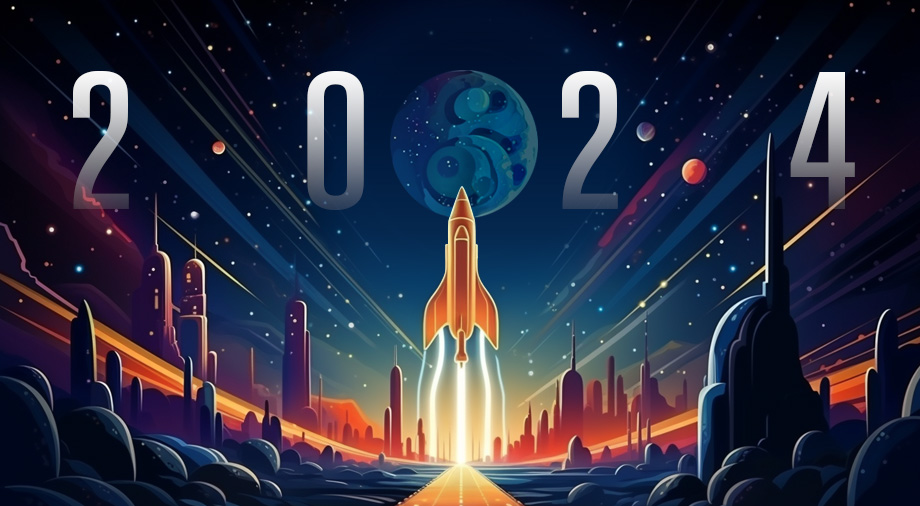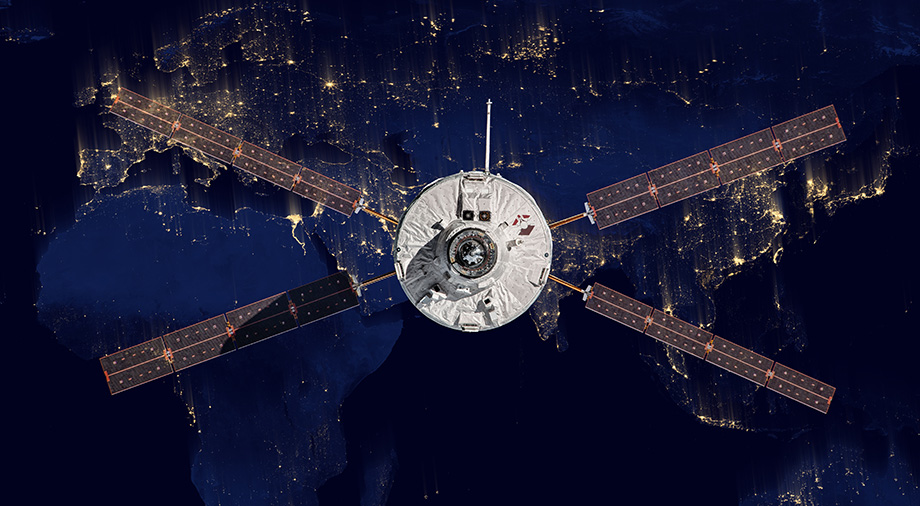ESA was initially formed from the merger of two European space agencies – the European Space Research Organization (ESRO) and the European Launch Vehicle Development Organization (ELDO). While the first agency skillfully performed its functions of organizing space missions, the European rocket industry was steadily floundering in place. This was partly due to a lack of funding, and partly due to a series of conflicts within the organization arising from different visions of ELDO.
This situation would remain unchanged until 1975, when the newly created ESA began its launch vehicle development program. This step would not only guarantee Europe a certain level of independence in conducting space missions, but also brilliantly prove Europe’s prowess in the global market of space launches.
Fantastic Four: the start of the Ariane series
A few years after its creation, ESA took the first steps to develop its own rocket program. With the support of the French National Space Agency (Centre National d’Etudes Spatiales, CNES), the agency began refining the concept of the L3S rocket proposed by the French back in 1973.
In fact, the L3S was a refined modification of the Europa IIIB rocket. The Europa series of rockets was a long-term development of ELDO started back in the 1960s. Its first modifications consisted of three stages, each of which was produced by three different European countries. The first stage was taken from the British Blue Streak rocket. The second, Coralie, was of French origin. West Germany was responsible for the development of the third stage, Astris. However, at the test stage, both Europa modifications (first and second) demonstrated a 100% failure rate, as all five test runs ended in failure. The proposed third modification of the rocket, which was called Europa IIIB, initially received the green light for its development, but was later deemed too expensive, and was put on the shelf until better times. Those times came with the advent of ESA.
Hence, the L3S was designed to completely make up for Europa’s failures. After six years of development, in 1979, the first three-stage launch vehicle, Ariane 1, appeared in ESA’s arsenal. From the beginning, Ariane intended to deliver commercial satellites and cargo into orbit. This was different from the standard purposes for which rockets were built. In most cases, space launches were conducted by military rockets that were converted for orbital launches, which made ESA’s approach innovative.
The debut launch of the Ariane 1 took place on December 24, 1979 during the mission L-01, when the rocket delivered its payload of the CAT (Capsule Ariane Technologique), designed to track all stages of its flight, into GEO. The equipment installed on the CAT not only contained sensors for pressure, temperature, and stress resistance, but was also itself a facsimile satellite payload. The Ariane 1 brought it into geosynchronous orbit 202 at 35,753 km.
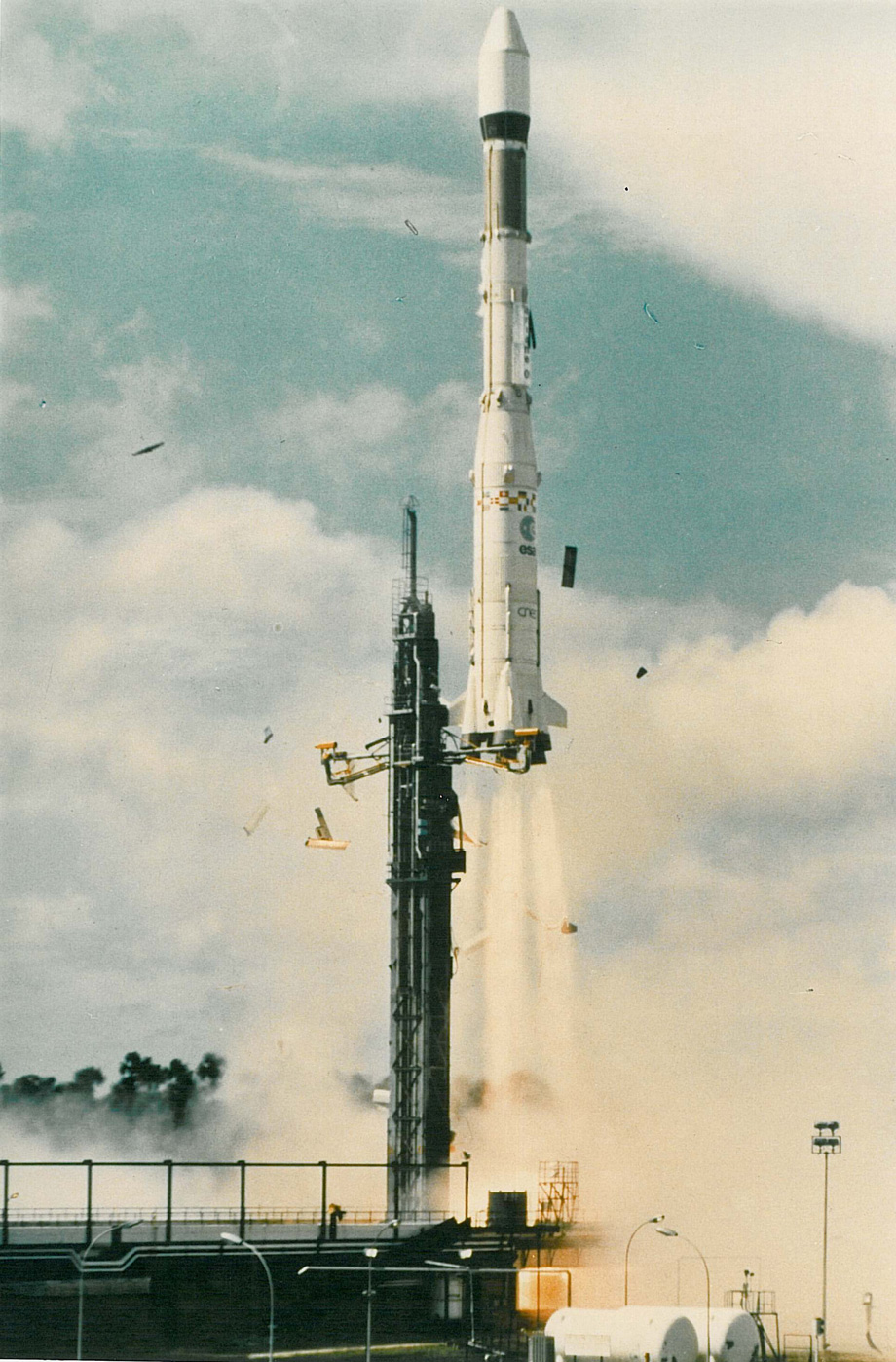
The first stage of the rocket housed four Viking-5 propulsion engines developed by the French manufacturer Société Européenne de Propulsion. The second stage of the rocket had an additional Viking-4 engine. The final third stage was equipped with an HM7-A engine made by Snecma (now Safran Aircraft Engines). It ran on liquid oxygen and liquid hydrogen propellants. ESA realized that this thruster design worked very well, allowing it to remain almost unchanged on the first four generations of the rocket, until the debut of the two-stage Ariane 5 in the late 1990s.
Success of the Ariane 1 mission was spectacular. It put an end to America’s long-running dominance in the market of launching commercial payloads into orbit – from now on, Europe would also be in the running for these contracts. The European Ariane 1 could adequately compete with the American launch vehicles, since the volume of its payload compartment allowed place several spacecraft there at once, significantly reducing the cost of their delivery into orbit.
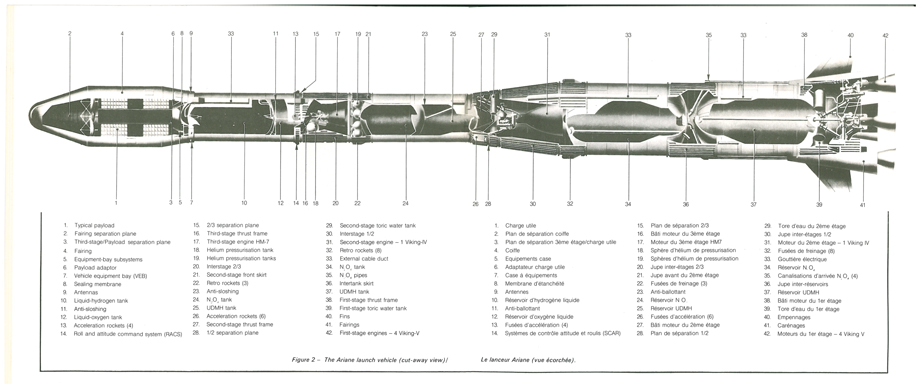
In March 1980, ESA and the French CNES founded the rocket building company Arianespace, which has since managed the development and creation of future versions of the Ariane.
Great hopes were placed on the potential of Ariane 1. However, they fell into doubt during the rocket’s first commercial launch (and fifth launch overall) for the L5 mission. An anomaly with the turbo pump on the third stage of the rocket led to an interruption in communication with the rocket eight minutes after launch. The rocket suffered a critical failure and lost its payload, leaving a big stain on the reputation of the newly formed Arianespace.
This was the second unsuccessful launch for Ariane 1, but it turned out to be the last, as the rocket will not fail again in the future. The error statistics would almost be acceptable, except the rocket had a total of 11 space launches (thus giving the Ariane 1 a failure rate of about 19%). The first unsuccessful commercial mission also raised questions about the feasibility of creating disposable rockets as such, as the debut of the US Space Shuttle deprived Arianespace of some contracts.
The situation was improved by the interest in the rocket of the satellite telecommunications consortium Intelsat. By 1984, Ariane 1 had flown two missions (L-7 and L-8) deploying Intelsat V F-7 communications satellites. It was these contracts that allowed Arianespace to build ten rockets to launch. During one of these launches, the historic ESA Giotto mission went to Halley’s Comet. However, the trend towards increasing weight of satellites over the course of the 1980s required modernization of the rocket.
The Ariane 2 project was started in 1979, simultaneously with the development of Ariane 3, which even made its debut two years before the second edition of the series. Thus, the third Ariane began flying in August 1984, while the second first lifted off in May 1986. At the same time, Ariane 2 was able to deliver 375 kg more cargo to geostationary orbit: 2175 kg compared to 1800 kg for Ariane 1.
Ariane 3 had even more power, equipped with two SEP P7.35 side boosters, which were used for the first 27 seconds of flight. The boosters helped to increase the payload capacity of the rocket by another 500 kg, upping it to 2700 kg for geosynchronous transitional orbits. In addition, the rocket’s failure rate improved significantly: out of 11 launches, the Ariane 3 experienced an error only once.
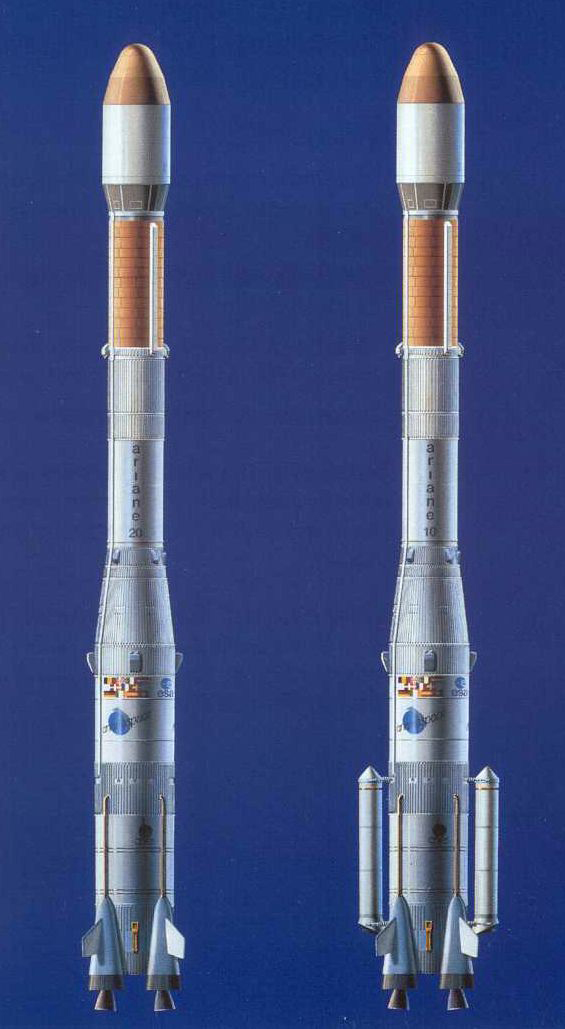
Getting over the the 2+ ton payload limit was very important for Ariane — by the end of the 1980s, when the second and third Ariane were decommissioned, the series had become the undisputed world leader in the class of heavy launch vehicles.
From 1988 to 2003, the Ariane 4 continued the glorious traditions of its predecessors. During this period, the rocket carried out 116 space missions, 113 of which were successful. The success rate of 97.4% was the best among all versions of Ariane, even including the subsequent incarnation of the rocket.
The payload capacity of the rocket was almost twice that of its predecessor: various modifications of the Ariane 4 (there would be six of them in total) could deliver from 2,000 to 4,800 kg of cargo into geosynchronous orbit, and from 5000 to 7600 kg into low Earth orbit. This power was achieved first and foremost due to the modernization and increase in the number of lateral solid-fuel boosters, which appeared back in the days of the Ariane 3. The combination of engines using both liquid and solid fuel was a novelty for European rocketry. A similar design solution was used at that time in the Chinese space program.
The Ariane 4 was truly indispensable for Europe, as made clear by the fact that almost the entire ESA joined the development of the rocket. It was financed by the governments of Belgium, Denmark, Spain, Ireland, Italy, the Netherlands, Germany, Great Britain, France, Sweden, and Switzerland. During its lifetime, Ariane 4 not only performed many commercial flights, but also launched outstanding ESA science missions, including Hipparcos astrometric satellite, as well as the Meteosat series of meteorological satellites.
To service the flights of the new rocket, the new ELA-2 launchpad was built at the French cosmodrome in Kourou, which ensured the possibility of carrying out up to eight launches of the heavy rocket per year. This put the ESA second in the early 1990s only to the Soviet Union in terms of launch capacity.
New Ariane 5 concept and Ariane 6 delay
In terms of engineering, Ariane 4 was the quintessence of the design embodied in the first rocket of the series. It made no sense to try further improving this technology, so during the start of development of Ariane 5 in January 1985, a radically new concept of rocket vision was introduced.
This first of all meant reducing the number of stages to two, plus auxiliary side boosters. The first (or main cryogenic stage) ascended using various modifications of Vulcain rocket engines. The second stage was equipped with one EPS rocket engine (Etage à Propergols Stockables; English: Storable Propellant Stage, SPS), which operated on a fuel mixture of monomethylhydrazine (MMH) and nitrogen tetroxide.
The main innovation of the EPS engine was the ability to perform re-ignition, demonstrated in October 2007, during the V26 mission.Two P24 solid side boosters were also attached to the Ariane 5, each weighing 277 tons (including fuel) and providing an initial thrust of 7,080 kN.
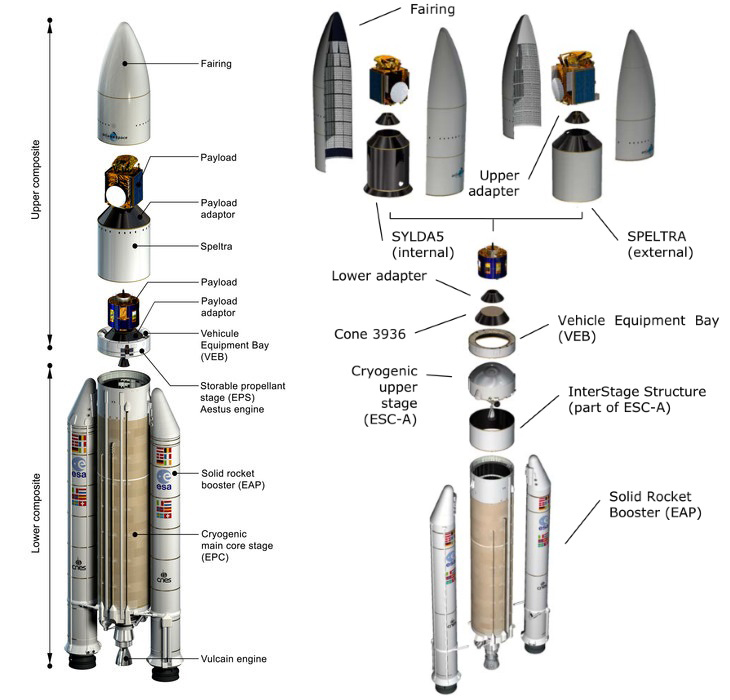
From the beginning, the Ariane 5 was developed specifically for the needs of manned launches, in particular the Hermes spacecraft proposed in the 1980s and 1990s. This was a significant departure from past Ariane modifications, which were designed to launch commercial satellites into orbit. The Ariane 5 handled its task well: different versions of the rocket could accommodate up to two large (SYLDA payload system) or three slightly smaller main satellites (SPELTRA system). A modification equipped with the ASAP payload platform was able to deploy eight smaller secondary link satellites at once.
In a single flight, the Ariane 5 could deliver significantly more payload to orbit (up to 10.8 tons per GTO in the EKA modification) than the Ariane 4 at an average of a 20% lower cost
But even despite the cost reduction and greater power, not everyone at ESA representatives was happy about the proposals to completely replace the almost flawless Ariane 4 in favor of the fifth generation, which, moreover, had to be developed from scratch. Because of this conflict of views, Great Britain was not involved in the development of Ariane 5. However, 20 other ESA member countries contributed to the construction by involving their contracting firms.
The first launch of Ariane 5 took place in 1996, but it was a failure due to a software error in the rocket’s navigation system. This bad experience would not be repeated, however, as between 2003 and 2017, the Ariane 5 conducted a record series of 82 successful space launches in a row. In total, during the entire life of the rocket’s program from 1996 to 2023, Ariane 5 performed 117 launches, of which 112 were successful (for an overall success rate of 96%).
ESA began developing a replacement for Ariane 5 while the rocket was still in service. The main goal of the new carrier was to increase the number of annual rocket launches from 6-7 to 11 launches per year. The current proposal is for the Ariane 6 to have two main modifications: one with two (Ariane 62) and another with four (Ariane 64) solid-fuel boosters for the acceleration phase of the flight. Both models will be aimed at delivering cargo to Sun Synchronous Orbit (SSO) and Translunar Injection (LTO). The Ariane 6 may debut during the implementation of the Artemis Agreement, a program launched in the United States to develop a permanent presence of humans on the moon.
The sixth-generation Ariane was supposed to start flying from 2020, but the latest statements from the ESA indicate that the rocket will not fly until after 2024. Recently, the European Agency again postponed the phase of its test trial, without giving specific reasons for its decision. It is likely a result of financial difficulties, as in meeting after meeting, European ministers cannot agree on a plan for the further development of the heavy rocket project.
To a certain extent, the multi-year production delay risks making Ariane 6 obsolete, as the rocket does not offer the ability to return its stages to Earth, and it still uses a fuel mixture based on liquid hydrogen and liquid oxygen (hydrolox), while many players in the market are increasingly trying to convert their propulsion systems to liquid methane fuel. In 2010, CNES attempted to start development of an alternative reusable booster based on Ariane 6 that could run on methane fuel, but as of 2015, ESA had questioned the benefit of this rocket design.
On November 23, 2023, Ariane 6 nevertheless conducted a long-term static fire test. This is one of the last checks that is done before a full-fledged first test launch, and it turned out successfully. The Vulcan 2.1 engine lasted 2 minutes 42 seconds, short of the 470 seconds ESA was preparing for.
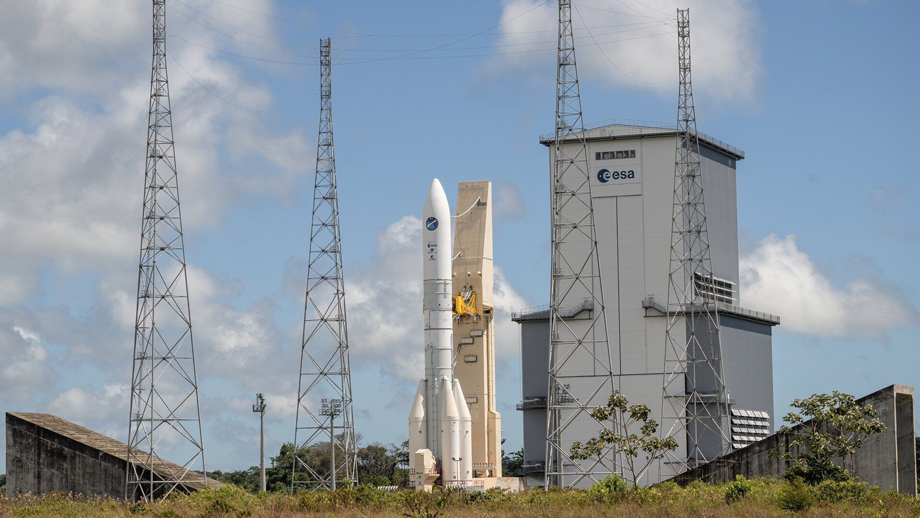
Image: ESA
Until Ariane 6 gets off the ground, ESA remains without its own heavy rocket. Fortunately, since the late 1990s, the European Space Agency has begun developing an alternative series of lower-capacity launch vehicles.
Introducing VEGA: A reliable lightweight?
In the 1990s, Arianespace announced the creation of another rocket. The main purpose of the new carrier was to fill the niche for delivering small payloads, mainly to polar and sun-synchronous Earth orbit.
The small-capacity rocket appeared was named Vega (Italian: Vettore Europeo di Generazione Avanzata). The project was developed with the participation of specialists from the Italian Space Agency (ASI), which provided the lion’s share (almost 65%) of the financing. France’s CNES also joined the production with a 13% share. Spain, Belgium, the Netherlands, Switzerland and Sweden also took part in the development of the first generation of the Vega.
Some design solutions were borrowed from Ariane, but Vega used three main stages plus an upper AVUM module involved in adjustment maneuvers in the final stages of the rocket’s flight. The first three stages of the rocket are powered by solid-fuel engines manufactured by the Italian company Avio, and the upper AVUM module is a spacecraft powered by a Ukrainian-made RD-843 liquid engine.
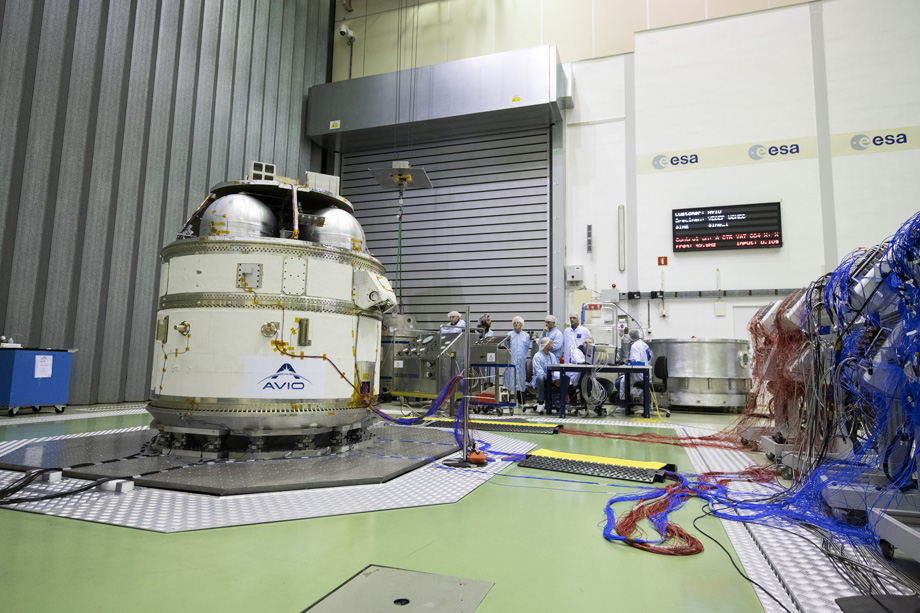
Image: ESA
The development of the rocket began in 2003 and lasted more than eight years. The first Vega flew on February 13, 2012. ESA recognized this launch as highly successful, and of the subsequent 21 launches of the first Vega modification, 20 were successful.
However, the next modification of the rocket, the Vega-C, would not enjoy the same success. Its second launch in December 2022 was a failure, with a nozzle design error on the Zefiro-40 second stage engine resulting in the loss of two Airbus Pléiades Neo Earth satellites. The future operation of the rocket was in jeopardy.
After the investigation, ESA put further Vega-C production on hold, proposing a complete modification of the AVUM upper stage and the introduction of a new engine design that would run on liquid oxygen and liquid methane cryogenic fuel. This decision led to the termination of Ukraine’s participation in the project. The production of components is now taking place exclusively in EU countries, primarily by German companies. According to the latest forecasts, the easy-to-use Vega-C can last until the end of 2024.
And while Ariane and Vega are on hiatus, the European launch vehicle market is presenting other replacement options. Britain’s Skyrora, along with Germany’s RFA and ISAR Aerospace, offer their own solutions for LEO and polar orbit with the aim of attracting both commercial customers and ESA itself. Some of these companies are ready not only to show new concepts of rocket technology, but also to ensure that Europe has its own fleet of space carriers.
Spaceships and Transporters: Hermes and ATV
From its very inception, the ESA was aimed at carrying out unmanned space missions. European astronauts reached space most often by the efforts of the US and the USSR, which had the undisputed leadership in delivering people into orbit.
However, the first concept for the production of a European spacecraft was developed by the French CNES back in 1975, after which it immediately received interest from the young ESA. The ship was named Hermes, and was very similar in design to the American Space Shuttle.
In 1985, ESA named the French aerospace company Aérospatiale as the main contractor for the project, which completed the first phase of development of the new vehicle in six years. However, at the beginning of the second phase, which included production and the beginning of missions, the project slowed down dramatically.
To some extent, ESA’s rapprochement with the Russian space agency in the 1990s contributed to the delays. Hopes for cooperation with the Russians forced the Europeans to abandon their glider spacecraft design in favor of a capsule-type transporter (it was this type of transport that was required for joint projects). In the end, the Hermes project was deemed unsuitable, and the ESA focused its efforts on developing another carrier.
In 1995, ESA made a new proposal to facilitate the operation of the ISS, in order to meet the logistical needs of the International Orbital Station. In 1998, the European Agency concluded a contract worth $470 million again with the French Aérospatiale. ATV (Automated Transfer Vehicle) cargo spaceships developed by the company delivered supplies to the ISS from 2008 to 2015. During the ATV-2 mission (known as “Johann Kepler”), ESA even delivered a record-breaking seven tons of supplies and scientific equipment.
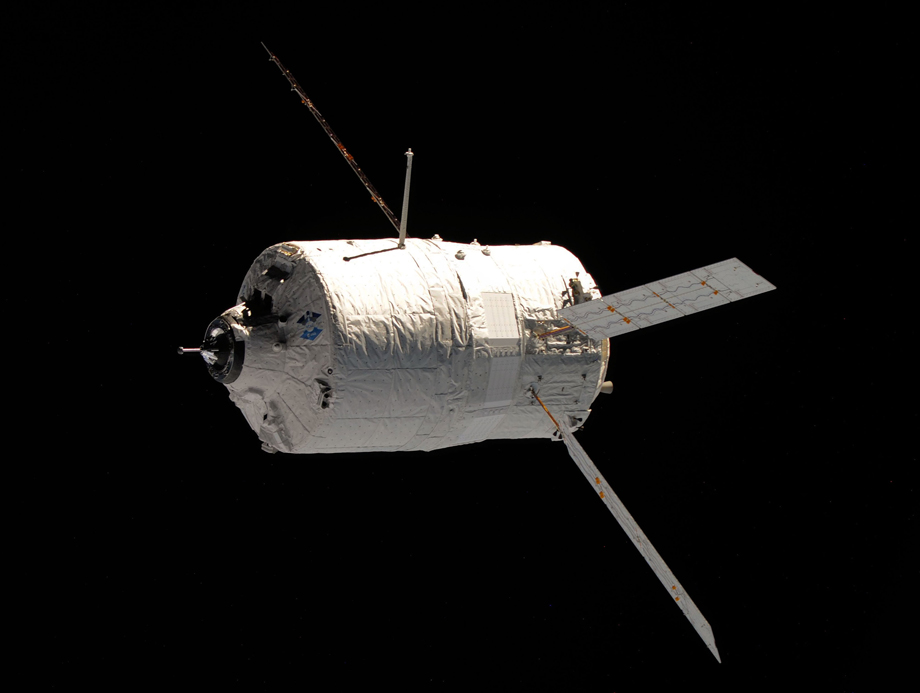
In the photo: ATV-2 (“Johann Kepler”)
A quarter of a century after the death of Eduardo Amaldi, who stood at the origin of the ESA, in March 2012 ATV-3 — an automated European-made transport ship named after the scientist — docked with the ISS. In addition to useful cargo and scientific equipment, he brought the same “letter of hope”, a visionary manuscript authored by Amaldi, written by a scientist 1958, where he expressed his thoughts on the creation of a space agency in Europe. This symbolic event summed up Europe’s decades of efforts to achieve a permanent presence in space.
Today, ESA is serious about renewing its program to deliver commercial cargo into orbit. During the November meeting at the European Space Summit in Seville, Spain, ESA management announced the competition for the project of a space cargo ship, which should deliver cargo to the ISS until 2028 inclusive. It is likely that the new ESA cargo ships will try to take their place in delivering cargo to the future commercial stations that are supposed to replace the ISS after 2030.
According to the competition plan, contracts for the production of a new space transporter with a total cost of $80 million can be distributed between two or three participating companies. Such an approach will guarantee Europe additional confidence that at least one of the executors will present the project of a working spacecraft on time. So far, none of the European companies have been approved to participate in the competition, but it is known that Exploration (it is working on a series of capsules to send one of them to the ISS as early as 2027) and the German Rocket Factory Augsburg (RFA ), which recently announced a collaboration with Atmos Space Cargo and OHB to create a space vehicle.
Time will tell if ESA will still be able to offer new solutions for vehicles to meet the logistical needs both at the level of orbital stations and for the delivery of cargo for Europe’s future presence on the Moon. Given its past experience, the space agency has every chance to realize these ambitions.

